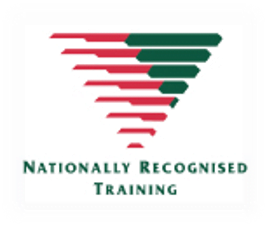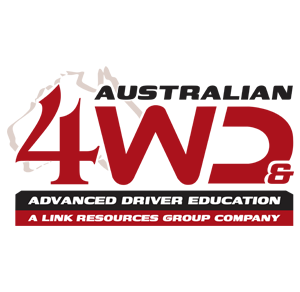RIIVEH305F: Operate and Maintain a 4WD Vehicle
Home » RIIVEH305F: Operate and Maintain a 4WD Vehicle

Australian 4wd and Advanced Driver Education – RTO CODE: 31223
RIIVEH305F – OPERATE AND MAINTAIN A 4WD VEHICLE
Note: RIIVEH305F can be incorporated within other competencies, such as,but not limited to, PMASUP236 Operate Vehicles in the Fields, RIIVEH201E: Operate Light Vehicle,.
This Operate and Maintain a 4WD Vehicle course is a 1 day course that meets the requirements, upon Successful completion, to receive a Statement of Attainment, for the Nationally Recognised Training Course “RIIVEH305F – Operate and Maintain a 4WD Vehicle”.
Who would select this course?
This course is has been developed and contextualised for those people specifically working in the Resources, Infrastructure and Construction Industry. This course is also often undertaken by people working in other industries such as the Gas, Oil and Energy sectors.
The Operate and Maintain a 4WD Vehicle is a practical driving course that is designed to familiarise drivers with the correct use of appropriate range (high or low range), gears and techniques to operate a 4WD vehicle through and over different and difficult terrain. It includes the mechanical understanding and the capabilities and limitations of a 4WD vehicle, without harm to personnel, damage to vehicle and equipment and minimum environmental damage.
https://www.traditionrolex.com/41
BMA COMPLIANCE: Australian 4WD & Advanced Driver Education is an approved provider to BMA and are compliant with their requirements.
In addition to BMA Australian 4WD & Advanced Driver Education is the major training provider for Advanced Driver Education to a number of mining, resources, infrastructure, tele-communications and energy companies.
Course Elements:
Identify four-wheel drive specific terms, terminology and techniques;
- Access, interpret and apply four wheel drive vehicle documentation and ensure the work activity is compliant.
- Identify the structural and handling differences between a conventional two wheel drive and a 4WD vehicle.
- Identify and demonstrate the purpose and use of front wheel hubs.
- Identify factors affecting tyre size, fitment, rating, and pressure.
- Identify, recovery hooks and mounting features.
- Identify hazards associated with incorrect use of vehicle features or equipment.
Plan for minimal environmental impact;
- Determine types of impact likely to occur during four-wheel driving activities.
- Demonstrate compliance with land management principles and policies when planning exploration activities.
- Comply with policies and management plans relevant to the activity area.
- Plan and conduct activities in a manner which minimises environmental impact.
- Adopt and implement procedures to ensure minimisation of harm to the environment from 4WD activities.
- Demonstrate cooperation and consideration towards other land users.
Perform pre-departure checks;
- Perform pre-departure checks under the bonnet, under the body, on external & internal items and accessories.
- Take action to correct any deficiency.
- Determine food and water requirements for journey.
- Select navigation equipment.
- Interpret weather conditions, determine suitability for driving.
- Apply safe vehicle loading practices.
- Secure items of personal luggage.
- Advise passengers of any special safety precautions to be taken when traversing rough terrain.
Use four-wheel drive mode;
- Operate 4WD both on and off road, in accordance with road rules, principles of 4WD and WHS regulations.
- Apply smooth accelerator control strategies over a range of terrain types.
- Demonstrate recommended braking techniques for hard top surfaces and off road conditions.
- Identify situations where the engagement of four-wheel drive is required.
- Engage four-wheel drive mode.
- Survey track to identify hazards, asses risk and select a best route.
- Select routes to minimise damage to the environment.
- Use appropriate range, gear, speed, driving and braking technique, negotiate a range of terrain types whilst maintaining control of vehicle, being aware of contextual/environment issues.
- Maintain appropriate hand positioning on steering wheel.
- Check brakes & undercarriage after negotiating varying terrain.
- Assess and perform repairs to damaged tracks.
- Use standard operating procedures when travelling in company with other vehicles.
Coordinate and recover a vehicle (A4ADE will conduct vehicle recovery in accordance with company requirements);
- Apply work procedures to ensure risk assessment, safe operating practices, and communication requirements are adhered to.
- Identify equipment and methods to recover a stuck vehicle.
- Identify risks associated with vehicle recovery and develop and implement strategies to minimise risks.
- Identify correctly rated recovery equipment and attachment points.
- Demonstrate procedures for preparing vehicles for recovery.
- Identify techniques to minimise impact on the environment during vehicle recovery.
- Coordinate safe recovery of a four-wheel drive vehicle using designated equipment and recovery method.
- Perform post recovery checks and report any vehicle or environmental repairs needed.
- Return recovery equipment to a reusable condition.
Perform maintenance and minor repairs on four-wheel drive vehicles;
- Select/access maintenance equipment, including spares and fluids, prior to departure, considering contextual issues of the trip
- Check vehicles prior to trip, and perform routine maintenance/repair tasks and submit vehicle written performance reports
- Demonstrate safe use of a jack to change a wheel on a four-wheel drive vehicle.
Additional Course Information.
Course Timings
The course start time is at 07:15, concluding at approximately 3pm.
A4ADE Practical Training Area
A4ADE exclusive Driver Training Facilitiy at Kurwongbah offers terrain which is similar to the terrain that people would be required to drive on in their everyday driving as part of their job. This offers superior opportunities for the development of skills and techniques in these environments rather than a simulated environment or a “make-shift” area artificially developed for driver training.
A4ADE Training Areas
A4ADE have exclusive Driver Training Facilitiy at Kurwongbah.
For group bookings additional training areas to those listed above include Cairns, Townsville, Mackay, Rockhampton, Gladstone, Mt Isa, Moranbah, Roma, Toowoomba, however not limited to these areas.
Corporate/Group Booking Training Areas
A4ADE are able to plan, develop and deliver specific course programs for groups or corporate, on request.
On-Site Training
Australian 4WD & Advanced Driver Education specialise in the design and implementation of client specific and site specific driver training and education. Training can be delivered for groups on any site (if suitable terrain is available), for group bookings. All courses are portable allowing staff to be trained in locations familiar to their day-to-day use of 4WD and other light vehicles and can be delivered to ensure minimal disruption to shift routine.
What course participants will require to undertake the course
- USI (Unique Student Identifier)
- 4WD Vehicle (one vehicle can be used for up to 2 participants from the same organisation:
- Should you not have access to a 4WD vehicle, A4ADE fleet vehicles are available for use at an additional cost. (please see “vehicles” below”); and
- Your vehicle will need at least half a tank of fuel.
- Driving license (that will be required for checking prior to course commencement).
- Appropriate clothing – this should be compliant with your companies policy however at a minimum must comprise of long sleeved shirt, long pants, closed shoes with good soles and hat.
- Sunscreen and insect repellent.
- Pad and pen.
- Morning tea and a light lunch with plenty of drinking water in summer months.
Vehicle Hire
A4ADE do have vehicles available for use. The cost of these vehicles includes, vehicle hire for completion of the course, fuel, recovery equipment (where required), cleaning and wear/tear on brakes and tyres.
Vehicle hire fee: 1 day vehicle hire is $175.00 per person, per day.
Please Note
- The vehicle maybe hired by other course participants, meaning that each vehicle hire may be shared by two participants. This will not have any impact on the amount of drive time that each hirer will experience.
- At times, there maybe more than one vehicle available, that will allow each vehicle hirer to experience a variety of 4WD types.
- If you wish to have exclusive use of a vehicle, then this can be arranged and would be at a cost of $200.00 per vehicle per day.
